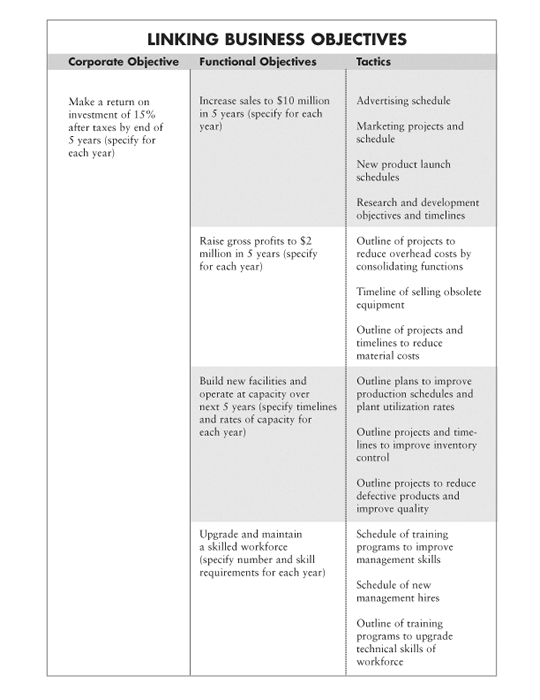 The Annual Rain Dance: The Annual Rain Dance:
Take Your Partners for Another Round of Budgeting
By Mark W. Sheffert
December 1999
Well, folks, it’s that time of year when visions of sugarplums (a.k.a. next year’s sales
forecasts) are dancing in business owners’ heads while chestnuts roast on an open fire
(fueled by the paper that this year’s objectives and budgets were written on). Yes, it’s
that time of year when businesses go through an annual ritual whereby they compile
numbers (lots of numbers with the advent of new budgeting software) and then refer to
this compilation as the new year’s budget or profit plan. We affectionately refer to this
ritual as the "Annual Rain Dance.”
After compiling numbers and thinking almost euphorically about the coming
year, the end result is a large document housed in a three-ring binder --- that promptly
occupies that special place on a shelf until the same time next year when the Annual
Rain Dance is repeated all over again.
Budgeting, when done right, is a plan that describes future desirable results. However, part of the frustration associated with budgeting is that a variety of terms are
used interchangeably to describe future these desirable results, such as "goals",
"targets", "aims", "strategies", and "objectives". Some say objectives are the overall
results while goals are steps along the way; others say the reverse. To eliminate this
confusion, get your management team to agree that since all these terms refer to
desirable future results, they will be called objectives (anyway, that’s what I will call
them in this article).
To put additional stakes in the ground between you and your management team,
I also suggest you agree on the following premises:
- Both short- and long-term objectives are connected in that they
compete for allocation of resources (beware of the tendency to sacrifice
long-term results for short-term gains);
- Functional objectives (financial, marketing, personnel, etc.) also compete
for resources and there is a tendency to give higher priority to financial vs.
personnel management, to recruiting vs. training, to quantity vs. quality, and to
tangible vs. intangible matters;
- Longer-term objectives will not be achieved unless the short-term or
subordinate objectives are coordinated and accomplished;
- It is impossible to predict the future with precise accuracy, and history
is not necessarily the best predictor of the future; and
- Future objectives can only be achieved if adequate resources (people,
money, material, time, and know-how) are provided in the right quality,
quantity, time and place --- objectives without essential resources are not
objectives, but delusions.
Creating Useful Objectives
Although budgeting is often viewed as a perfunctory accounting exercise intended
to fulfill paperwork requirements, it should provide an opportunity for periodic selfexamination
and evaluation of market dynamics, competitiveness, and new innovations.
This evaluation is the basis for writing three to five corporate performance-based
objectives. These should be statements of a desired result that can be measured and that
are to be achieved by a specific time. For each corporate objective, there should be
functional objectives for the next relevant time period and an indicator to measure
achievement. And, for each functional objective, there should be tactics explaining how
the objective will be achieved. (See table on the following page.)

It is not easy to make all objectives measurable. For instance, how can you
accurately measure employee morale? Simply saying that you hope to have high
employee morale will not motivate your managers to do anything about it. Even if it is
not perfect, tie some type of performance indicator (like turnover) to every objective or
else no one will pay attention to it. Remember, what is measured is what gets done.
Now that you’ve written some really cool objectives, it’s time to stack them up
against the following common-sense test:
- Are the objectives suitable? Are they relevant, and do they support the
purpose and mission of the business? Are they compatible with other objectives?
- Does achieving the objectives rely on divine intervention and
super-human feats, or is it reasonable to expect you can achieve them?
- Is the business or management able and willing to provide
resources in the right quality and quantity, at the necessary time and place?
- Are the objectives worth the resources required? Have you prepared
a cost / benefit analysis for each major objective?
- How will each objective be achieved?
- Can progress and end results be measured in terms of quality,
quantity, time, and/or cost?
- Is it possible to modify the objectives to respond to unforeseen factors
- Is there a firm buy-in and commitment on all sides to provide the
energy and resources needed to accomplish the results?
Avoiding Budgeting Pitfalls
Budgeting is not just a technical activity, but should be viewed as representing the"essence of management". Your business’ ability to achieve its objectives is largely
dependent upon the availability of resources and your ability to operate within the
constraints of a budget. The budget is the primary instrument of planning and control.
It reflects all management decisions that have financial consequences, and serves as a
benchmark to measure the business’ progress in achieving its objectives.
Given the importance of budgeting to management businesses, there are gazillions
of resources available on how to create budgets from bookstores, libraries, the SBA,
banks, and on the Internet, so I will not go into them here. Rather, I will review
common budgeting pitfalls that we have observed while working with troubled
companies:
- Relying upon unrealistic sales forecasts: The best way to begin sales
forecasting is from the "ground up" with your sales reps, but the best way to
finish it is to have upper management carefully review it for accuracy. A common
cause of business failure is management’s reliance on overly optimistic sales
forecasts, which cause a trickle-down effect to cause errors in procurement
schedules, manufacturing capacity planning, and resource allocations.
- Not anticipating external events: Too many businesses create annual
budgets by relying on past results to predict the future and not providing for
flexibility and adaptability to factors outside their control. For example, what
impact would a 3-4 percent movement in interest rates have on your profits?
Or, how would you respond to pricing changes by your competitors?
- Neglecting to forecast cash flow: I’ve seen many companies create
beautiful profit and loss statements and balance sheets, but then neglect to
forecast the financial impact of their objectives on their cash balances. Are you
just sneaking over the bar each month? If sales are off in one month, how does
that impact your cash levels? Make sure that cash flow statements are included in
your annual budget.
Communicate, Execute, and Measure
An annual budget that incorporates corporate objectives, functional objectives, tactics,
and a budget can become an effective management tool useful for tracking monthly
progress toward the achievement of your goals. But to ensure its success don’t let your
work stop here. Use your budget as a communication and tracking tool --- now is the
time to communicate, communicate, communicate … and then execute, execute, execute… and then measure, measure, measure!
Use the annual budgeting process as an opportunity to push your business to
achieve its growth potential. Otherwise, your plan will become a dust-gatherer on your
shelf, and then someday you won’t be around for the Annual Rain Dance!
Back to Top |



